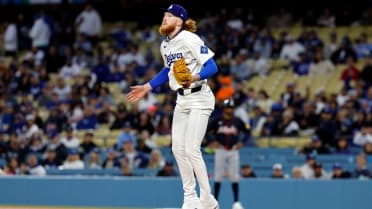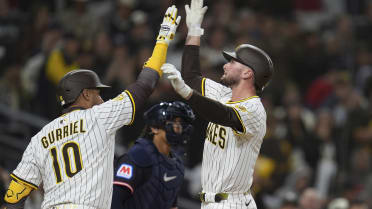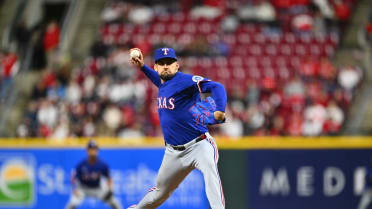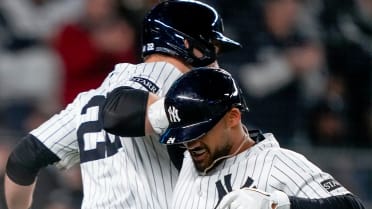“I mean, for me, it worked last year.”
Juan Soto, who is such a good hitter that he has a 160 OPS+ this year – 60 percent better than league average, and some people frame his season as disappointing so far. He gets it. The above was part of his answer when asked earlier this week why he is participating in the Home Run Derby again.
Last year, he participated with a clear goal:
“It might mess with the swing of all the guys that are locked in, but I think it’s going to fix mine because I’m hitting too many ground balls,” Soto said of the Derby in the days leading up to the event. “I hope it fixes my swing trying to put the ball in the air. That’s what we’ve been trying the whole year, so I hope it fixes mine.”
That’s the kind of self-aware hitter that Soto is, doing the Derby to fix his swing and succeeding. Soto finished second for NL MVP last year after a next-level second half.
Here’s a look at how it worked for him last year and how the Derby can spark Soto again.
A standout 2021 second half
Before the All-Star break last year, Soto had a 139 OPS+, along with a .283 batting average and .445 slugging percentage. Then he had a 216 second-half OPS+, hitting .348, slugging .639 and reaching base at a Bonds-ian rate.
Soto had a .525 on-base percentage in the second half. It was the eighth time since the first Midsummer Classic in 1933 that a batter had at least 200 second-half plate appearances and got on base at a .525 or better clip. The others:
2015 Joey Votto
2004 Barry Bonds
2003 Barry Bonds
2002 Barry Bonds
2001 Barry Bonds
1957 Ted Williams
1941 Ted Williams
We weren’t kidding about Bonds-ian. That is a select group. If we zero in on walks, it’s equally fun. Soto walked in 27% of his plate appearances in the second half. The only batters to walk at least that frequently in a second half (min. 200 plate appearances)? 2001-04 Bonds, ‘96 Bonds and ‘41 Williams.
But it wasn’t just about reaching base. Soto hit 18 homers, seven more than he had in the first half, and in two fewer games, too.
Only two Derby participants have had a larger differential between second and first-half home run totals than Soto’s seven: 1995 Albert Belle (22 more in second half than first half) and 1999 Mark McGwire (nine more). As he said, it worked.
Which wasn’t a fluke
We know that Soto’s second-half numbers were otherworldly. But the how and why they happened are important, too. He talked about wanting to elevate the ball more as part of the impetus for Derby participation, and that’s exactly what he did.
After a 16.7% fly ball rate in the first half, Soto had a 25.5% such rate in the second half. How do we know that elevating was in his best interests, besides the fact that he said so himself? Soto hit .361 and slugged 1.265 on fly-ball contact last year. Sounds like contact worth maximizing and making as often as possible.
Entering the All-Star break, Soto’s ground-ball rate was on pace to be the highest of his career. By season’s end, it landed at 52.9%, which was the second-lowest of his four-year career to that point.
Of course, it’s important to note that part of why a change that sounds so simple, like elevating the ball, worked for Soto is because his eye at the plate is top notch. He was 100th percentile in chase rate, 90th in strikeout rate and 80th in whiff rate. His underlying plate discipline allowed a swing improvement to unlock video-game numbers.
And he’s already on the right track
We wrote at the end of June about how Soto had the tools to move past his slower start, and already in the span since, he’s been moving in the right direction. He had a career-long 16-game hitting streak end Friday, but going 0-for-2 with three walks still extended his career-long on-base streak to 24 games. The fact that each of those streaks are career-bests is no small feat for a career that has already been quite accomplished.
This stretch also included two overlapping spans with a .607 on-base percentage, the highest for any player in any 15-game span this season.
Entering the aforementioned hit streak, Soto was hitting .214 with a .796 OPS this season. He’s now up to .247 and .895, respectively.
And he’s doing it with that same, second-half of 2021-style approach. He’s hitting the ball in the air. Prior to the hit streak, he had a 25.2% sweet-spot rate – the percentage of contact in the 8-32 degree launch angle sweet-spot range. In other words, line drives and productive fly balls.
Since Day 1 of that hit streak, he has a 43.5% sweet-spot rate. That would rank fifth in MLB if it were for the full season. Soto is hitting .634 and slugging 1.437 on sweet-spot contact this year. It’s working.
“I’ve been working a lot on my swing. It’s getting better. It’s feeling better. Whenever I start hitting the ball that way, it seems kind of good and I think that’s all I need,” Soto said recently. “Whenever my swing is better, everything is better. Everything falls in the spot where it needs to be, and everything just goes together.”
With a specific Derby goal in mind
As his season continues down the right path, here’s one other fun thing to keep an eye on. Soto wants to put on a show to the opposite field in the Derby, after setting a Statcast-era record with a 520-ft homer last year.
“I was pretty lucky last year. I don’t know how far I can hit one, but I will see,” he said. “I’m going to try to hit the longest oppo homer of this Derby. … Everybody can pull the ball. Let’s see how far you hit the ball oppo.”
Statcast data for the Derby doesn’t include direction, but we took an unscientific look at each tracked Derby (since 2016) and saw a 432-ft opposite-field homer by Salvador Perez last year as the unofficial longest.
Soto has 41 career oppo homers. Only Aaron Judge has more since ‘18. If anyone can crush a monster Derby home run to the opposite field, it’s Soto.
MLB.com’s Jessica Camerato contributed to the reporting of this story.
Sarah Langs is a reporter/editor for MLB.com based in New York. Listen to her on the Ballpark Dimensions podcast with Mandy Bell.




